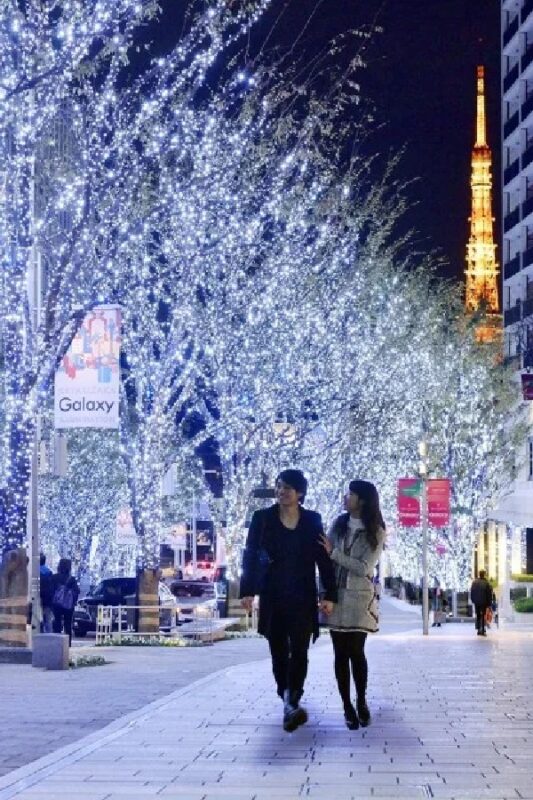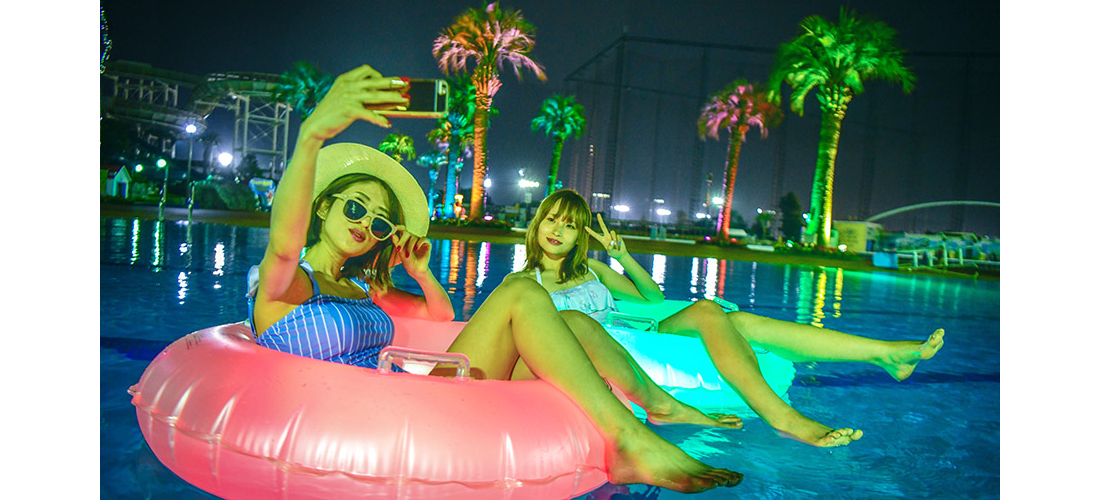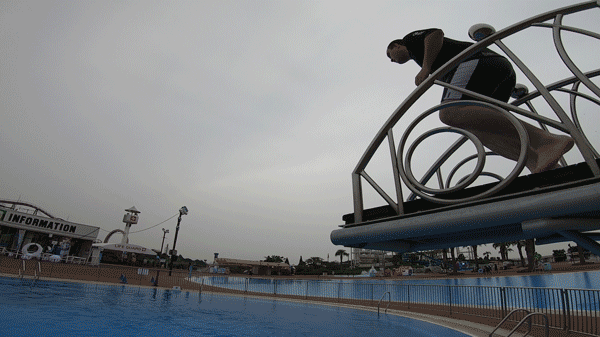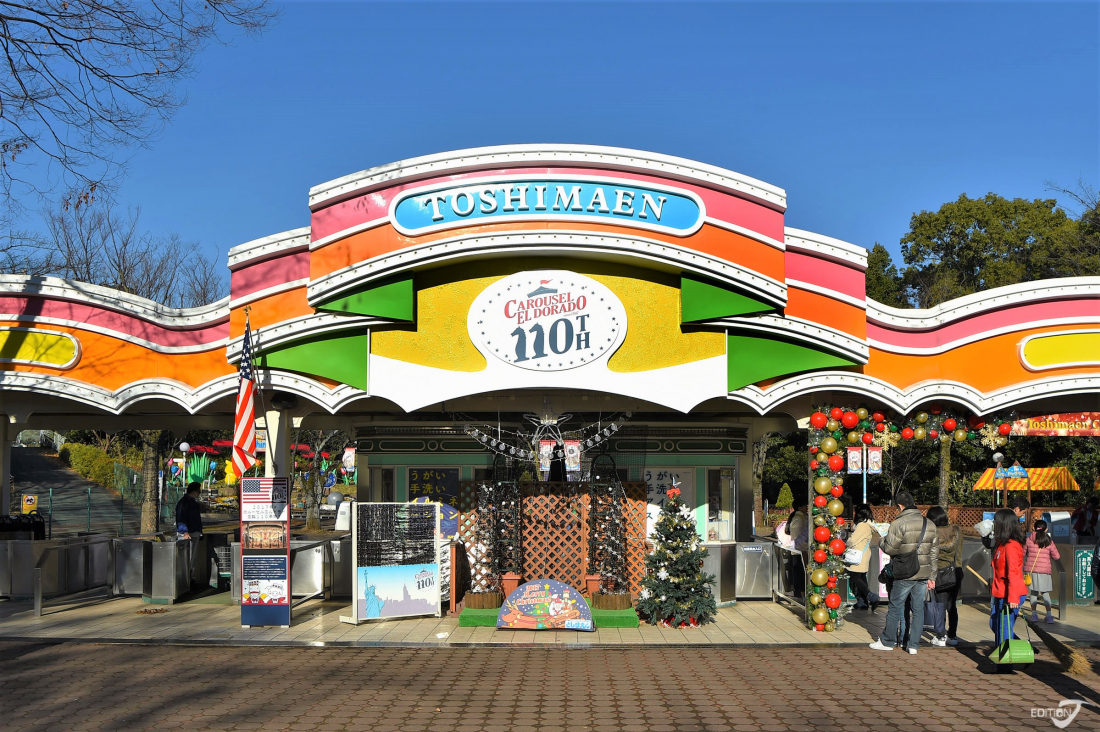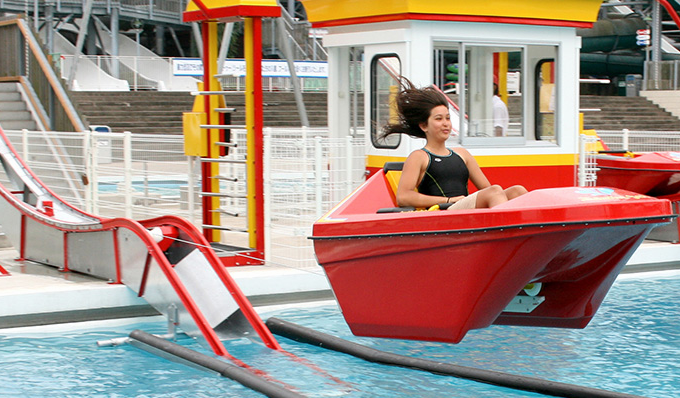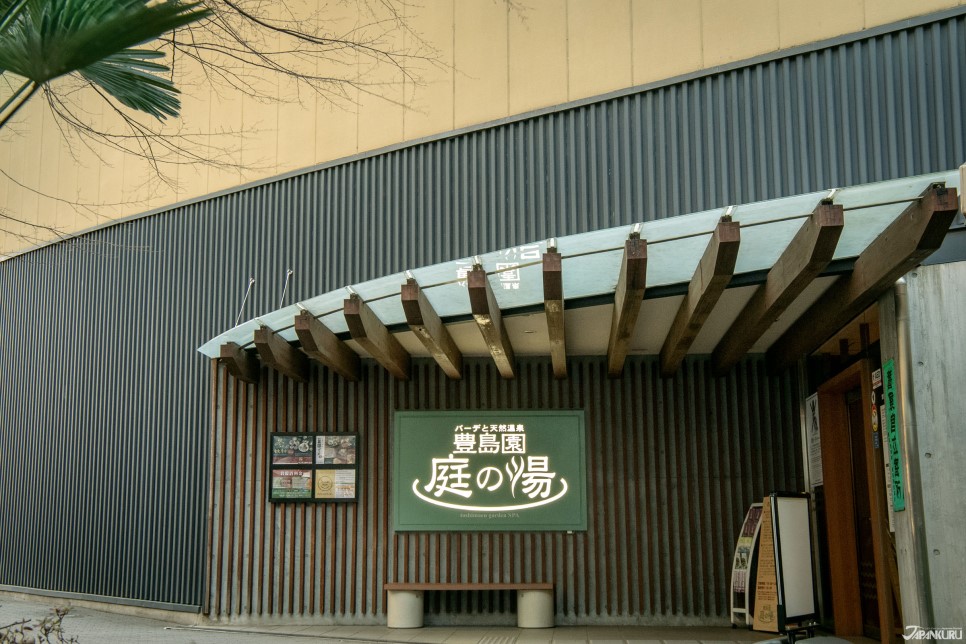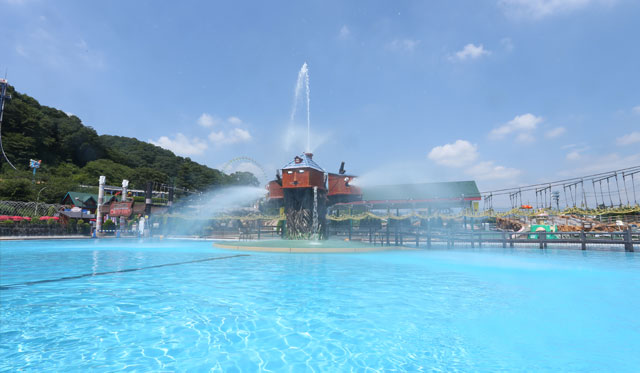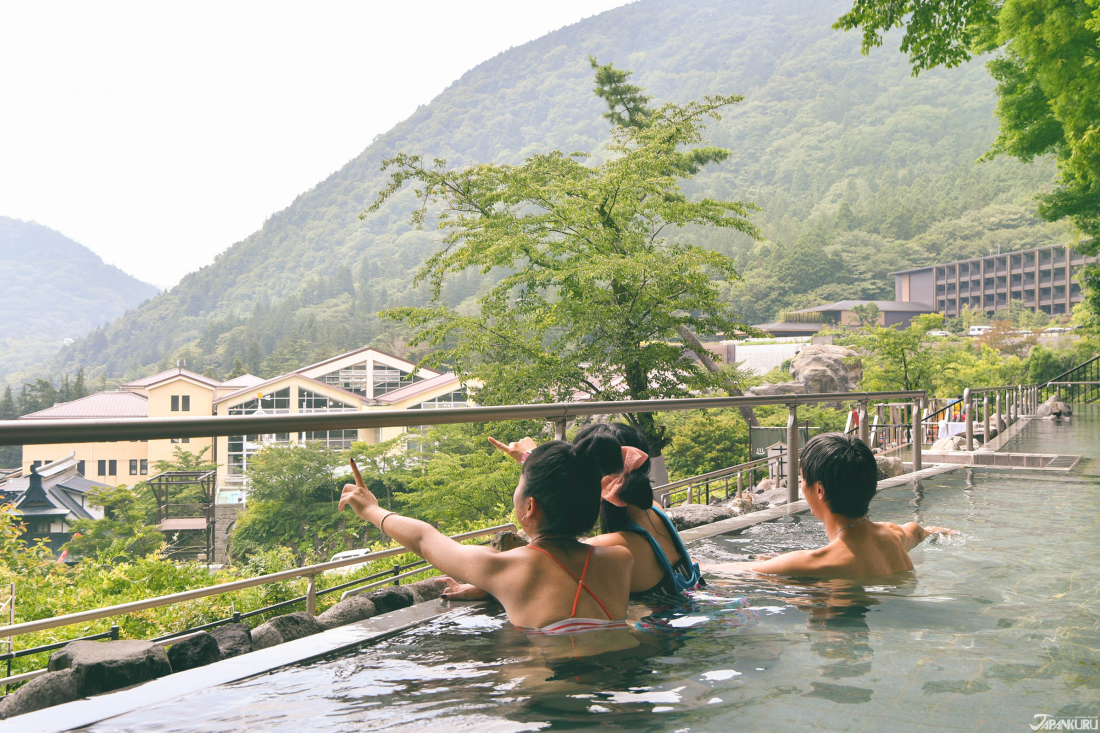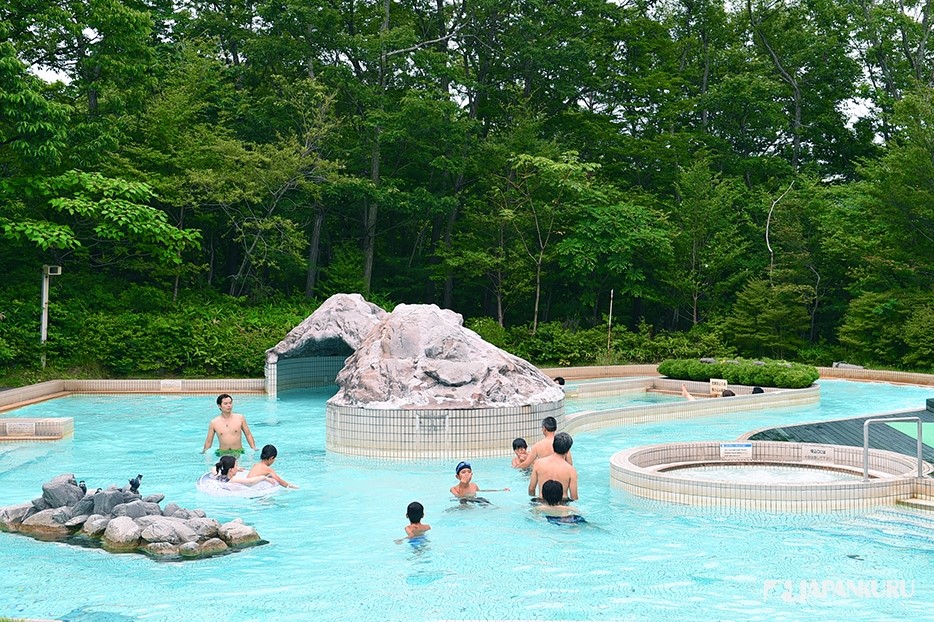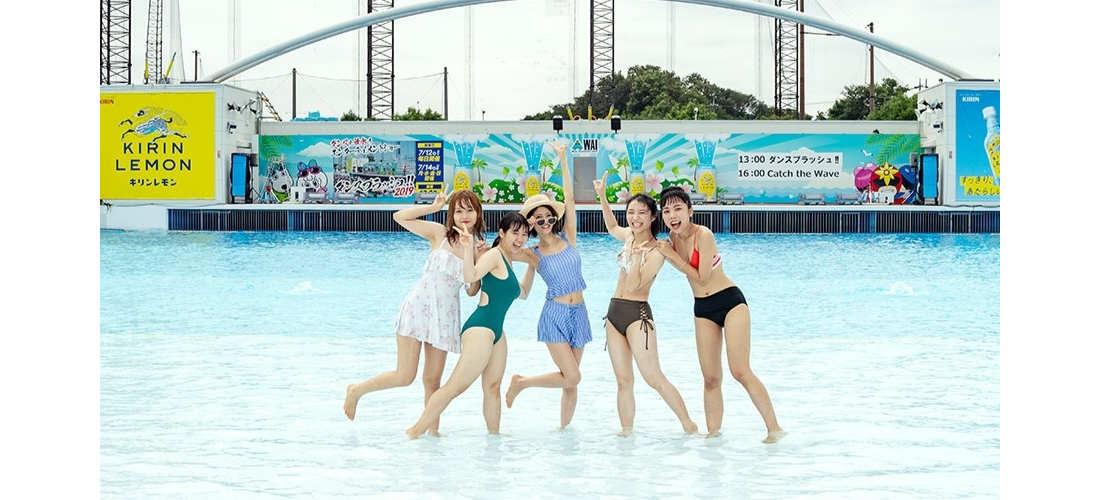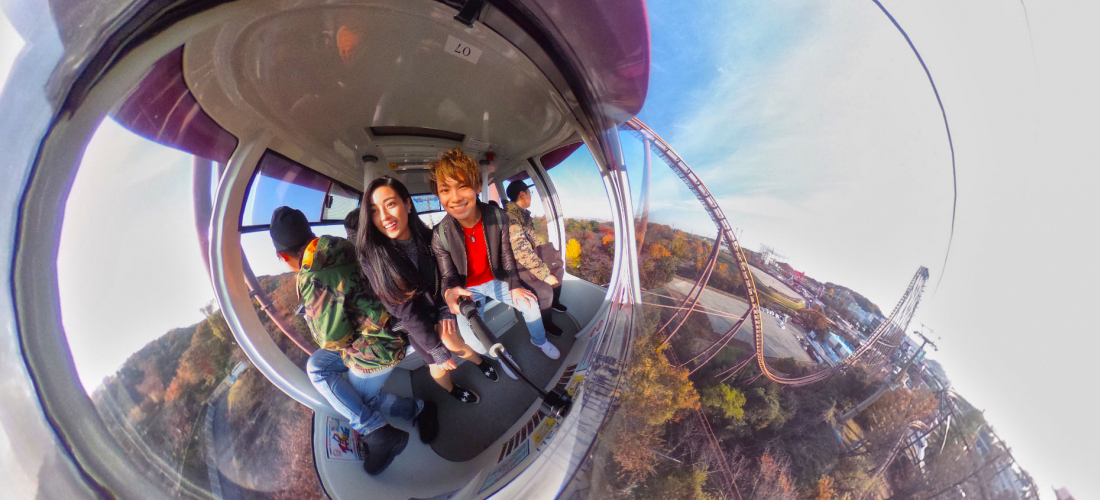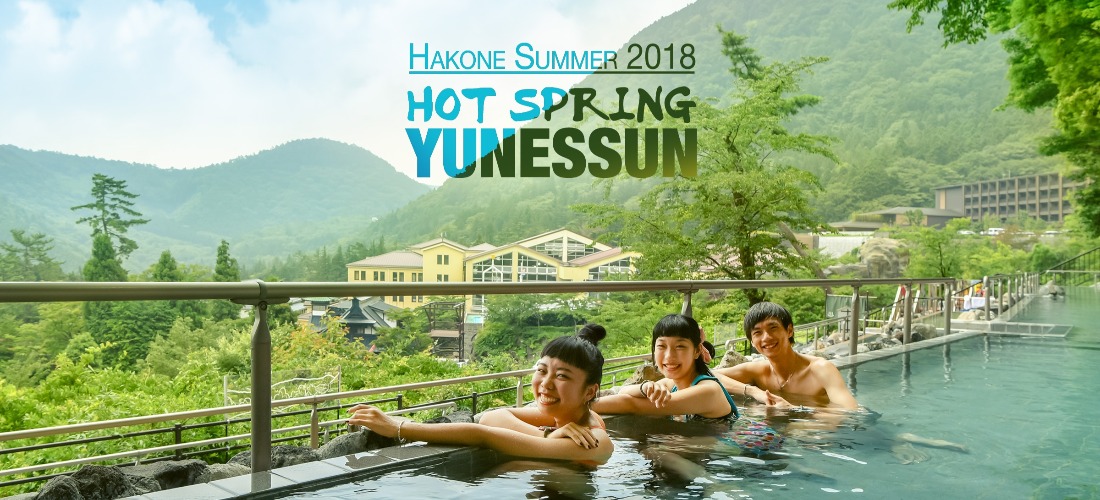CONTENTS
If you’re in Tokyo this summer, or you will be soon, you know it’s pretty sweltering out there. The best way to keep cool? Chill out (literally) in the water! Read on for the best spots to do that in Tokyo, and the surrounding regions.
① Yomiuriland’s Pool Wai
Our first choice for summer fun is the water park inside Yomiuriland, Tokyo's largest amusement park. It's been around for almost 60 years! These days, summer means the opening of Pool Wai, a water park quite popular among local Tokyoites.
The wave pool slopes down gently, but goes to a depth of 1.4 meters (4'7"), with waves cresting at about 60 cm (2'). Between July and September or so, daily performances are held on a stage in the middle of the beach-like wave pool. The "Catch the Wave" show starts at 16:00!
We rather like the park's lazy river, though, where you can rent floaties made for two people to sit together.
Plus, don't miss the diving pool. There are diving platforms at three heights: .5 m, 1 m, or 2 m (1' 8", 3' 3", or 6' 7").
Perhaps best of all, and extremely popular among the young adults of Japan, is Pool Wai's "night pool." This isn't a separate pool; Yomiuriland stays open late into the evening, turns on flashy night-time lighting, and creates a space aimed towards a slightly older demographic than usual. With cool music and special events, you'll see a lot of people in their teens and twenties at night.
▶ More on Yomiuriland's Pool Wai.
② Toshimaen’s Water Park & Niwa no Yu (庭の湯)
Toshimaen (豊島園) has its own lengthy history in Tokyo, and has the cool retro look to prove it. The water park portion of Toshimaen opens every summer, and it's a straight shot, in just about 30 minutes, from Ikebukuro Station (池袋駅).
Image Source: Official Website
Like any good water park, Toshimaen is home to plenty of pools, lazy rivers, slides, and fun rides that will get you good and soaked. They even have do a night pool, like Yomiuriland. For more details on the water park, check out the official website (jp).
▶ More on Toshimaen year-round.
You can also take a little three-minute walk over to enjoy the water at Niwa no Yu, Toshimaen's own hot spring bath. If you're thinking "oh no, I don't do naked public baths," then don't worry – you can take a dip in your bathing suit, too.
If the water park seems a little loud and rambunctious for you, spend a relaxing afternoon at Niwa no Yu. There might not be any slides or rides here, but the pools are filled with all-natural hot spring water!
▶ More on Toshimaen's Niwa no Yu.
③ Tokyo Summerland
Image Source: Official Website
Between Yomiuriland, Toshimaen, and Tokyo Summerland, you've got Tokyo's three biggest pools!
One of the features that makes the place especially popular is a separate doggy area! Bring your dog, and you can all spend some time cooling off in the water. Or, if you're just passing through Tokyo sans-dog, go to the dog area to say hello to some local pooches.
Image Source: Official Website
With pools outdoors and indoors, and a number of different attractions, the park draws crowds of all ages. I mean, wouldn't you want to go down a watermelon slide?
Image Source: Official Website
Tokyo Summerland's Snake Slide is both the park's oldest, and its most popular slide. Slide down and you'll slip along serpentine curves, swinging this way and that!
④ Hakone Kowakien Yunessun (箱根小涌園ユネッサン)
Located in Hakone, a quick trip from Tokyo, Yunessun is a hot spring water park. At a glance parts of it might look like your standard water park, and guests do wear swimsuits, but all the water really is from a natural hot spring! You've probably seen pictures of Yunessun before, since their novelty baths filled with things like green tea and wine are always a hit around the internet, but the park has a huge variety of facilities.
Water park-style attractions, novelty baths, plus indoor and outdoor pools filled with hot spring water.
The best part of the simpler baths and pools? The amazing views of Hakone! You can look out onto the lush natural greenery while enjoying the natural spring water. In Japan people tend to only visit hot springs in the winter, but Yunessun is really working to break that habit, offering a variety of summer fun.
▶ More on Hakone Kowakien Yunessun.
⑤ Sunvalley Nasu Resort
A little north of Tokyo, in Tochigi Prefecture, you'll find the resort hotel Sunvalley Nasu. The hotel, surrounded by natural forests offers nine different kinds of lodgings, but more importantly there are a variety of open-air hot spring baths and pools!
Literally steps away from the surrounding rooms, the main pool is heated, and open most of the year (except during winter months, when it just gets a bit too cold!)
Get into the resort atmosphere and sip a colorful cocktail as you lounge by the pool. (About 800 yen each.) It's a little like a tropical beach resort, except you're surrounded by fewer palm trees and more evergreens!
If you make it over to any pools this summer, let us know in the comments, or on facebook / instagram / twitter!
Details
NAME:Tokyo Pools/Water Parks
MAP
COMMENT
FEATURED MEDIA
VIEW MORE 
A New Tokyo Animal Destination: Relax & Learn About the World’s Animals in Japan
#pr #japankuru #anitouch #anitouchtokyodome #capybara #capybaracafe #animalcafe #tokyotrip #japantrip #카피바라 #애니터치 #아이와가볼만한곳 #도쿄여행 #가족여행 #東京旅遊 #東京親子景點 #日本動物互動體驗 #水豚泡澡 #東京巨蛋城 #เที่ยวญี่ปุ่น2025 #ที่เที่ยวครอบครัว #สวนสัตว์ในร่ม #TokyoDomeCity #anitouchtokyodome

Shohei Ohtani Collab Developed Products & Other Japanese Drugstore Recommendations From Kowa
#pr #japankuru
#kowa #syncronkowa #japanshopping #preworkout #postworkout #tokyoshopping #japantrip #일본쇼핑 #일본이온음료 #오타니 #오타니쇼헤이 #코와 #興和 #日本必買 #日本旅遊 #運動補充能量 #運動飲品 #ช้อปปิ้งญี่ปุ่น #เครื่องดื่มออกกำลังกาย #นักกีฬา #ผลิตภัณฑ์ญี่ปุ่น #อาหารเสริมญี่ปุ่น

도쿄 근교 당일치기 여행 추천! 작은 에도라 불리는 ‘가와고에’
세이부 ‘가와고에 패스(디지털)’ 하나면 편리하게 이동 + 가성비까지 완벽하게! 필름카메라 감성 가득한 레트로 거리 길거리 먹방부터 귀여움 끝판왕 핫플&포토 스폿까지 총집합!
Looking for day trips from Tokyo? Try Kawagoe, AKA Little Edo!
Use the SEIBU KAWAGOE PASS (Digital) for easy, affordable transportation!
Check out the historic streets of Kawagoe for some great street food and plenty of picturesque retro photo ops.
#pr #japankuru #도쿄근교여행 #가와고에 #가와고에패스 #세이부패스 #기모노체험 #가와고에여행 #도쿄여행코스 #도쿄근교당일치기 #세이부가와고에패스
#tokyotrip #kawagoe #tokyodaytrip #seibukawagoepass #kimono #japantrip

Hirakata Park, Osaka: Enjoy the Classic Japanese Theme Park Experience!
#pr #japankuru #hirakatapark #amusementpark #japantrip #osakatrip #familytrip #rollercoaster #retrôvibes #枚方公園 #大阪旅遊 #關西私房景點 #日本親子旅行 #日本遊樂園 #木造雲霄飛車 #히라카타파크 #สวนสนุกฮิราคาตะพาร์ค

🍵Love Matcha? Upgrade Your Matcha Experience With Tsujiri!
・160년 전통 일본 말차 브랜드 츠지리에서 말차 덕후들이 픽한 인기템만 골라봤어요
・抹茶控的天堂!甜點、餅乾、飲品一次滿足,連伴手禮都幫你列好清單了
・ส่องมัทฉะสุดฮิต พร้อมพาเที่ยวร้านดังในอุจิ เกียวโต
#pr #japankuru #matcha #matchalover #uji #kyoto #japantrip #ujimatcha #matchalatte #matchasweets #tsujiri #말차 #말차덕후 #츠지리 #교토여행 #말차라떼 #辻利抹茶 #抹茶控 #日本抹茶 #宇治 #宇治抹茶 #日本伴手禮 #抹茶拿鐵 #抹茶甜點 #มัทฉะ #ของฝากญี่ปุ่น #ชาเขียวญี่ปุ่น #ซึจิริ #เกียวโต

・What Is Nenaito? And How Does This Sleep Care Supplement Work?
・你的睡眠保健品——認識「睡眠茶氨酸錠」
・수면 케어 서플리먼트 ‘네나이토’란?
・ผลิตภัณฑ์เสริมอาหารดูแลการนอน “Nenaito(ネナイト)” คืออะไร?
#pr #japankuru #sleepcare #japanshopping #nenaito #sleepsupplement #asahi #睡眠茶氨酸錠 #睡眠保健 #朝日 #l茶胺酸 #日本藥妝 #日本必買 #일본쇼핑 #수면 #건강하자 #네나이토 #일본영양제 #อาหารเสริมญี่ปุ่น #ช้อปปิ้งญี่ปุ่น #ร้านขายยาญี่ปุ่น #ดูแลตัวเองก่อนนอน #อาซาฮิ

Japanese Drugstore Must-Buys! Essential Items from Hisamitsu® Pharmaceutical
#PR #japankuru #hisamitsu #salonpas #feitas #hisamitsupharmaceutical #japanshopping #tokyoshopping #traveltips #japanhaul #japantrip #japantravel

Whether you grew up with Dragon Ball or you just fell in love with Dragon Ball DAIMA, you'll like the newest JINS collab. Shop this limited-edition Dragon Ball accessory collection to find some of the best Dragon Ball merchandise in Japan!
>> Find out more at Japankuru.com! (link in bio)
#japankuru #dragonball #dragonballdaima #animecollab #japanshopping #jins #japaneseglasses #japantravel #animemerch #pr

This month, Japankuru teamed up with @official_korekoko to invite three influencers (originally from Thailand, China, and Taiwan) on a trip to Yokohama. Check out the article (in Chinese) on Japankuru.com for all of their travel tips and photography hints - and look forward to more cool collaborations coming soon!
【橫濱夜散策 x 教你怎麼拍出網美照 📸✨】
每次來日本玩,是不是都會先找旅日網紅的推薦清單?
這次,我們邀請擁有日本豐富旅遊經驗的🇹🇭泰國、🇨🇳中國、🇹🇼台灣網紅,帶你走進夜晚的橫濱!從玩樂路線到拍照技巧,教你怎麼拍出最美的夜景照。那些熟悉的景點,換個視角說不定會有新發現~快跟他們一起出發吧!
#japankuru #橫濱紅磚倉庫 #汽車道 #中華街 #yokohama #japankuru #橫濱紅磚倉庫 #汽車道 #中華街 #yokohama #yokohamaredbrickwarehouse #yokohamachinatown

If you’re a fan of Vivienne Westwood's Japanese designs, and you’re looking forward to shopping in Harajuku this summer, we’ve got important news for you. Vivienne Westwood RED LABEL Laforet Harajuku is now closed for renovations - but the grand reopening is scheduled for July!
>> Find out more at Japankuru.com! (link in bio)
#japankuru #viviennewestwood #harajuku #omotesando #viviennewestwoodredlabel #viviennewestwoodjapan #비비안웨스트우드 #오모테산도 #하라주쿠 #日本購物 #薇薇安魏斯伍德 #日本時尚 #原宿 #表參道 #japantrip #japanshopping #pr

Ready to see TeamLab in Kyoto!? At TeamLab Biovortex Kyoto, the collective is taking their acclaimed immersive art and bringing it to Japan's ancient capital. We can't wait to see it for ourselves this autumn!
>> Find out more at Japankuru.com! (link in bio)
#japankuru #teamlab #teamlabbiovortex #kyoto #kyototrip #japantravel #artnews
Photos courtesy of teamLab, Exhibition view of teamLab Biovortex Kyoto, 2025, Kyoto ® teamLab, courtesy Pace Gallery

Japanese Makeup Shopping • A Trip to Kamakura & Enoshima With Canmake’s Cool-Toned Summer Makeup
#pr #canmake #enoshima #enoden #에노시마 #캔메이크 #japanesemakeup #japanesecosmetics

⚔️The Robot Restaurant is gone, but the Samurai Restaurant is here to take its place. Check it out, and don't forget your coupon!
🍣신주쿠의 명소 로봇 레스토랑이 사무라이 레스토랑으로 부활! 절찬 쿠폰 발급중
💃18歲以上才能入場的歌舞秀,和你想的不一樣!拿好優惠券去看看~
#tokyo #shinjuku #samurairestaurant #robotrestaurant #tokyotrip #도쿄여행 #신주쿠 #사무라이레스토랑 #이색체험 #할인이벤트 #歌舞伎町 #東京景點 #武士餐廳 #日本表演 #日本文化體驗 #japankuru #japantrip #japantravel #japanlovers #japan_of_insta

Japanese appliance & electronics shopping with our KOJIMA x BicCamera coupon!
用JAPANKURU的KOJIMA x BicCamera優惠券買這些正好❤️
코지마 x 빅 카메라 쿠폰으로 일본 가전 제품 쇼핑하기
#pr #japankuru #japanshopping #kojima #biccamera #japaneseskincare #yaman #dji #osmopocket3 #skincaredevice #日本購物 #美容儀 #相機 #雅萌 #日本家電 #일본여행 #면세 #여행꿀팁 #일본쇼핑리스트 #쿠폰 #일본쇼핑 #일본브랜드 #할인 #코지마 #빅카메라 #japankurucoupon
MAP OF JAPAN
SEARCH BY REGION

LATEST
VIEW MOREEVENT CALENDAR
VIEW MORE
